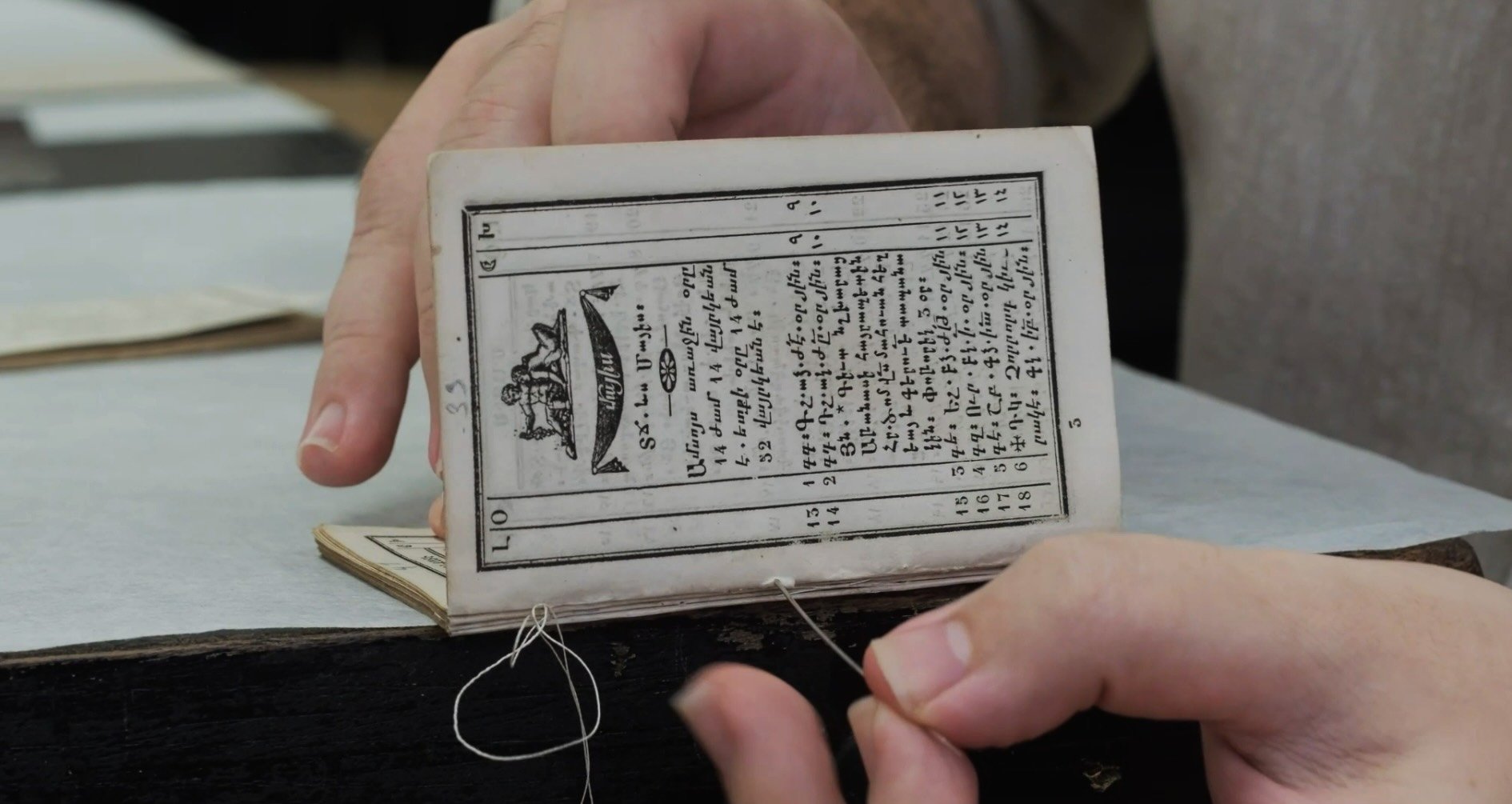
TRACE:
Traditional Arts and Crafts of Europe
TURKEY
Jewellery-Making in Istanbul:
The Ottoman Era
Artist: Haçadur Kelleci - Jeweller and Stone-Setter
During the Ottoman Era, jewellery making continued to grow in two directions: at the palace and outside of the palace. The master-apprentice production system in the Ottoman Empire evolved though the Ehl-i Hiref (literally, Community of the Talented) organization that housed hundreds of imperial artistic societies at the Court. Within the Ehl-i Hiref organization, many a craftsmen and artisans were trained from apprenticeship to the rank of master depending on the length and process of their education. A jeweller is the master that turns raw material into a finished product. In Turkish professional jargon, he is also known as ‘sadeci.’ On his counter, metal is shaped only through mechanical processes without any heat exposure; the lapidary uses not mechanical mass production techniques. He is familiar with all areas of specialization and shapes his process with this knowledge as part of the production flow. Mounting entails the setting of the precious or semi-precious stones into the slots for stones reserved on the metal shaped as part of a certain design. The setting of the jewel simultaneously serves two purposes: Firmly fixing the stone to prevent it from being loosed from the metal and to maximize its light, colour, and brilliance. Depending on its shape, type, or colour, the stone can be set into the metal using different methods based on the jewellery’s design. The process constantly evolves and can be personalized depending on the master. The stone setter is called ‘mıhlayıcı’ in Turkish.
Turn on the subtitles on the video.
Bookbinding
Artist: Avedis Aydinyan - Bookbinder and Restorer
The hard protective cover made to prevent the leaves of manuscripts and printed works from wearing out and falling apart is called binding. This word, which means "leather" in Arabic, refers to the main material of bookbinding. In Islamic book art, bindings are decorated as works of art. Since writing the Holy Quran with beautiful calligraphy, illuminating it and keeping it in an artistic binding is considered a form of worship, special importance and care is given to the bindings of the Quran first and then to all kinds of manuscripts. The first Turkish bindings were made by Uyghur Turks in the 7th century. II. The nakkaşhane in the Ottoman palace during the reign of Mehmed II (reign 1451-1481). During the reign of Bayezid (reign 1481-1512), a bookbinding organization was established. Artists who do bookbinding are called "binders". Materials for the binding include leather, cardboard, gold, paint, thread. In addition, binding can be made using marbling, solid, fabric and precious stones. Tools such as moulds, stamps, brushes, cutters, vices and cues are also used in the production of binding. Ottoman bookbinders used three groups of techniques in binding: printing, inlay and dyeing. According to the materials, the bindings are leather, fabric, marbled, lacquered; According to their decoration techniques, they are grouped as şemseli, zilbahar, yekşah, zerduz, and Çarkuşe. The 15th century is the period of transition from the Anatolian Seljuk style to the Ottoman style. The density of geometric decorations in the first examples is interpreted as Anatolian Seljuk influence. II, one of the most important periods of Ottoman bookbinding art. The developments in the field of bookbinding during the reign of Mehmed II were in preparation for the classical period. II. During the reign of Bayezid, the colours of the leather bindings, their construction and the quality of the workmanship in the decoration are eye-catching. In the classical composition with sunbursts, salbeks and brackets, the bindings are surrounded by borders.
Turn on the subtitles on the video.
Box Making
Artist: Turan Çoşkun - Bookbinder and Box Maker
The hard protective cover made to prevent the leaves of manuscripts and printed works from wearing out and falling apart is called binding. Turkish bookbinding finds its classical form in the reign of Suleiman I (reign 1520-1566). In addition to vegetal decorations in saz style, gilded sunbursts and angle brackets, embroidered fabric bindings and patent leather (lacquered) bindings with landscape or floral depictions are seen in this period. In addition, precious stone inlaid (murassa) bindings, which are magnificent examples of the cooperation of the bookbinder and the jeweler, also become widespread. With the decline of the Ottoman Empire in the 17th century, the quality of the volumes began to decline. In the 18th century, flower motifs in the şükûfe style dominate the bindings. Bindings decorated with lacquered and realistic motifs and yekşah bindings are becoming common. Bouquets with poppy, water lily and hyacinth flowers are added to the classical rose, carnation, tulip and pomegranate flower motifs.
Turn on the subtitles on the video.
Wood Carving and Inlay
Artist: Abdul Munem
Wood arts is a branch of art that has been shaped by artistic movements throughout the ages in many cultures around the world and is seen in every field, from daily use items to functional structures. In terms of traditional Turkish arts, it starts with the Turks in Central Asia; It develops in line with the artistic concepts of the Seljuks, Anatolian Principalities and Ottoman Empire periods. Among the wooden examples that have survived to this day, there are many different building and decoration materials used in religious and civil architecture. The main ones are pulpit, lectern, lectern, Quran case, railing, window-door wing, eaves, ceiling beam, column, column head, ceiling hub, frame, turban, lamp holder, screen, coffee table, table, chair, box, drawer. and the like. Although the types of wood used in woodworking vary, the most common ones are ebony, oak, walnut, apple, pear, boxwood, cedar, linden and rose in terms of durability and ease of processing. The patterns and motifs used in wood art examples have great richness. While a generally compiler expression draws attention in the early stages of Islamic art; A new synthesis emerges from the fusion of the techniques and styles that the Turks brought with them to Anatolia with local decorative sources. Floral, geometric, calligraphy and, to a lesser extent, figure depictions attract attention in wooden decorations. In the Ottoman Empire, woodworking craftsmen were called "neccar". In wood art, both ornamental designs created with patterns and decorations created with various techniques are used. Wood carving, known as "naht" in the Ottoman world, was the most frequently used technique. It is applied by cutting and carving the sections between the patterns drawn on the wood with the help of special cutting tools. There are types such as low relief, high relief, deep carving, curved (mâil) cut, grid carving, cage carving, decoupage. Another method used in wood decoration, where different carving techniques are used together on the same surface, is "inlay".
Turn on the subtitles on the video.
String Instrument Making
Artist: Turan Demireli
Various traditional instruments have been used and manufactured in Turkey from the Ottoman Empire to the present day. During the Ottoman Empire, the profession of instrument making was learned through a master-apprentice relationship and that this profession was generally performed by non-Muslim citizens. Western musical instruments belonging to the violin family began to become widespread with the westernization movements that developed in the Ottoman Empire. Instrument making in Turkey is a profession whose roots date back to the Ottoman Period, was developed by learning through the master-apprentice-apprentice relationship, and has survived to this day. In instrument making training, master and apprentice work together in the same workshop. The apprentice watches the master carefully while working, learns the master's techniques, and improves himself by imitating the master (Gebeloğlu, 2017). During the Ottoman Empire, the word "saztıraşan", which means a reed cutter and a reed manufacturer, was also used for instrument makers (Tetik Işık- Uslu, 2012). Luthiers who lived in this period produced many special instruments and carried out maintenance and repair of existing instruments. Tanburcu Muslihüddin, who lived during the reign of Suleyman the Magnificent, worked as an instrument maker in the palace (Karabıyık, 2011). During the reign of Mahmud I, in May 1751, a tambur was made from ebony wood with gold plated around the body and throat, based on the sample tambour brought from the harem.
(Dökmeci, Sela. (2021). TÜRKİYE'DE ÇALGI YAPIMININ GELİŞİMİ VE LUTİYELİK.)
Turn on the subtitles on the video.
Shoe Making
Artist: Necmi Güneş
Turks who were skilled in leatherworking in Central Asia continued to strengthen their ties with leather after their migration to Anatolia. With agriculture and animal husbandry being at the forefront, they produced high quality works of leather and leatherworking along with animal husbandry in every region they were in, starting from the founding years of the Ottoman Empire. Thus, shoemaking has become one of the important professions in the field of leatherworking. In the resources related to this profession, where manual dexterity and experience are effective; Four names are identified as Iskaf, Kefş-ger, Haffaf/Kavvaf and Başmakçı. In Mesnevi, C.VI (Turkish translation), it is mentioned that there are quality leather and wooden shoe molds in the shop of the person who practices the shoe craft. In Anatolia, it is known that there are shops selling ready-made shoes as well as producing shoes to order by taking measurements. When we look at the footwear of the Turks in Central Asia, it is seen that shoes such as sandals and basmaks, especially boots, take the first place. With the establishment of the Seljuk Empire, these shoes came to Anatolia and were diversified by adding different forms and features. Production rules are determined according to the form of the shoe, the leather used and the stitching characteristics. In the travelogues of many travelers who visited Anatolia, it was written that the Turks were advanced in leather, leatherworking and shoemaking, and it was documented in the religious court records that what kind of leather was processed and coloured in which regions.
(İmre, M., Akbaş, K. (2020). Sadberk hanım müzesi koleksiyonundan örneklerle osmanlı dönemi kadın ayakkabı tasarımları üzerine tespitler. Sanat ve Tasarım Araştırmaları Dergisi, 1(1), 73-89.)
Turn on the subtitles on the video.
